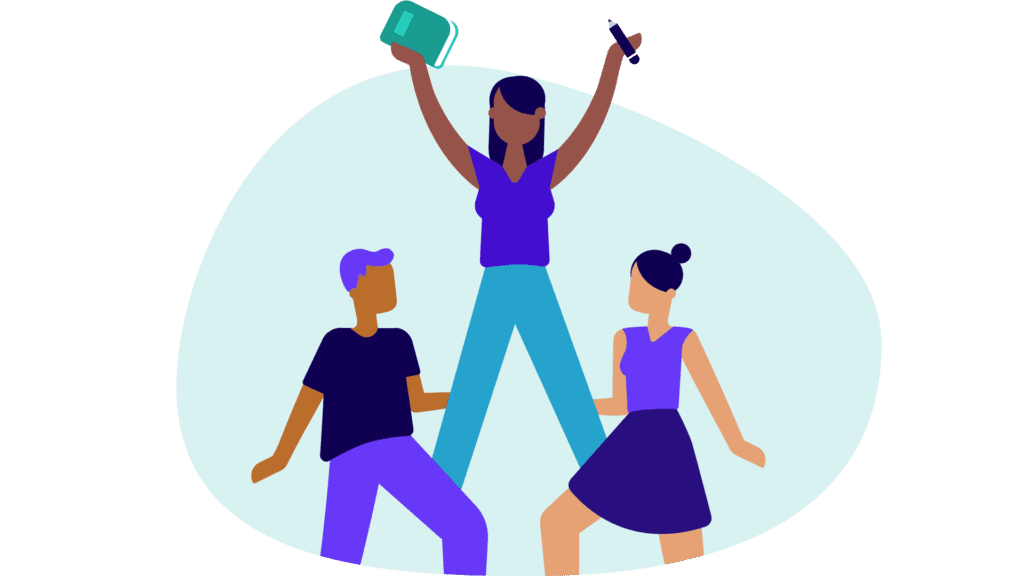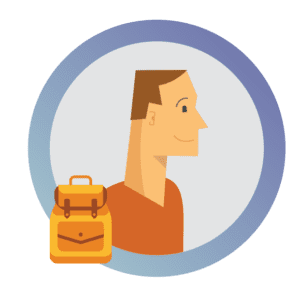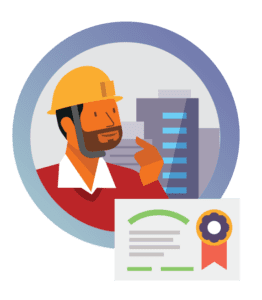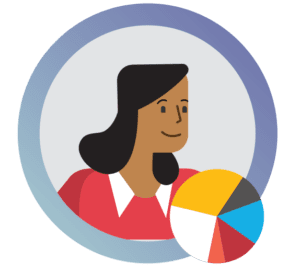People Need Access to Data
States have an opportunity to reimagine their data systems to meet people’s data access needs.
Most states now have a powerful tool that could provide people with the information they need to make decisions at key transition points along their journey through education and into the workforce. But even the country’s most advanced statewide longitudinal data systems (SLDSs)—systems that connect individual-level data over time from early childhood, K–12, postsecondary, and workforce—were not built to enable the meaningful access to data that people need to make education and workforce decisions. States must invest in and transform their data systems to meet people’s needs.
To help state leaders get started on this important work, we developed a vision for state data systems that:
- Illustrates various data users and their needs;
- Lays out what is possible when statewide longitudinal data systems (SLDSs) provide tailored access to individual-level data; and
- Provides recommendations for state and federal leaders to make this vision a reality.
Read on for more details about how to get this work done.
Everyone, from students to governors, should have tailored access to information to drive student success, economic mobility, and systemic change.
- Individuals and the people who support them in navigating transitions, like students, their families, job seekers, and counselors, need access to tailored, secure dashboards that enable them to draw insights and view aggregate and trend information side by side with individuals’ own data pulled in from local or other sources.
- Members of the public need user-friendly, dynamic dashboards, reports, and open data tools that display indicators they can disaggregate by population and geographic region.
- State-level policymakers in charge of cross-sector, statewide changemaking and system leaders, like community college, local workforce board, and district leaders, need functionality that enables them to investigate new policy questions and helps them direct the future of the state’s education and workforce investments.
There are a wide variety of audiences who need meaningful access to data to make informed decisions about the future, including:
- High school students have a lot of big questions to answer as they make decisions that affect their journeys through high school and into their next step. Right now, students and their families are struggling to find answers to these questions because information is hard for families to find, use, and understand. Learn more.
- Career pathways are rarely a linear journey. After entering the workforce, adults may return to postsecondary education to reskill, upskill, or switch careers. Unfortunately, accessing information that can help them determine and evaluate their options to find high-quality careers is often difficult for adult learners. Learn more.
- District leaders face an evolving education landscape. They must be able to act nimbly to target interventions where they are needed, assess the effectiveness of programs, and plan for the future. As district leaders work to develop local policies that result in the best outcomes for all students, they grapple with many questions. Learn more.
- Legislators need data to answer questions and take action to improve their state’s education system and support their state’s economic future. Additionally, they have an important role to play in creating policies to govern, secure, and invest in their state’s SLDS so that individuals and members of the public also have access to data to help them make decisions about their education and careers—and how to navigate their options. Learn more.
The future of state data systems must start with people.

SLDSs must be designed to:
Early childhood is a crucial time for children and those who support them. Families with young children often rely on a variety of services to ensure that their child has what they need to thrive—including early care and education programs, early intervention, home visiting, and social assistance programs, among others.
Unfortunately, families may have very limited information about these services and if their children are eligible to receive them. Early childhood service providers are often overburdened by data submission requirements that provide no value to them. And policymakers may know very little about the services being used by families, and the impact those services have, making it difficult to assess service gaps and allocate resources to address them.
![]() Eric is a middle school principal who wants to make accessing health services and other resources easier for his students. Jasmine is a district superintendent who wants to develop and maintain policies that help students thrive within and out of school, and be successful after graduation. Both K–12 leaders need access to data to ensure their students thrive.
Eric is a middle school principal who wants to make accessing health services and other resources easier for his students. Jasmine is a district superintendent who wants to develop and maintain policies that help students thrive within and out of school, and be successful after graduation. Both K–12 leaders need access to data to ensure their students thrive.
Everyone should have access to the information they need to ensure that K–12 students receive necessary support in and out of school. But right now, state data systems provide insufficient access to the data that helps individuals, the public, and policymakers answer their questions and make decisions that support student success.
Read the use case on how state data systems are uniquely positioned to support K–12 decisionmaking.
 Grace wants to be the first person in her family to go to college. Lisa knows the type of career she wants. Both high school students need data to navigate their individual pathways.
Grace wants to be the first person in her family to go to college. Lisa knows the type of career she wants. Both high school students need data to navigate their individual pathways.
Students like Grace and Lisa who are transitioning from high school into what comes next have questions: What programs meet my needs? Where can I meet my goals without unnecessary debt? Should I go to a four-year college or does an apprenticeship better fit my needs? What outcomes can I expect from different options? When state data systems enable access, individuals will be able to use data to make informed decisions about their pathways into college and career.
Read the use case on how state data systems should support these transitions.
 Joey is in community college and wants to transfer to a four-year university, and he has unique circumstances he needs to navigate.
Joey is in community college and wants to transfer to a four-year university, and he has unique circumstances he needs to navigate.
Students like Joey who are already in college need a variety of supports to help them through their postsecondary education. Whether it’s transferring credits from a community college to a different university, discovering flexible employment options while in school, or understanding financial aid eligibility, data can inform students of the best ways to navigate their unique education journeys.
Read the use case on how state data systems should support these transitions.
 Raj went straight into the workforce after high school. Now that he has a family, he has questions about how he can advance his career prospects and earning potential.
Raj went straight into the workforce after high school. Now that he has a family, he has questions about how he can advance his career prospects and earning potential.
Job seekers like Raj who have been a part of the workforce for some time may want to further their career and earning potential through career planning. With access to information about available training programs, wage data, employer data, and open roles in their area, job seekers can understand the opportunities available to them and how they can expand their skillsets to achieve better outcomes.
Read the use case on how state data systems should support these transitions.
 Corinne’s nonprofit needs to marshal every resource it can to support students from low-income families to complete college. Luis wants to help state leaders invest in career-readiness programs and employment supports that work for students of all backgrounds. Both are researchers who need data to make their work possible.
Corinne’s nonprofit needs to marshal every resource it can to support students from low-income families to complete college. Luis wants to help state leaders invest in career-readiness programs and employment supports that work for students of all backgrounds. Both are researchers who need data to make their work possible.
Right now, researchers like Corinne and Luis must navigate clunky processes to get the information they need, if they can get it at all. As a result, communities don’t have information about what works and policymakers lack information on where to allocate resources to programs that work. With robust data access, researchers can be more effective in conducting analyses and helping communities and policymakers answer questions about what works.
Read the use case on how state data systems should support these transitions.
Our Recommendations
State Recommendations
1. Codify cross-agency data governance in state law.
2. Establish an independent entity to administer the state’s SLDS.
3. Map existing assets to identify system strengths and limits.
4. Engage the public to prioritize data access needs and seek continual feedback.
5. Fund SLDSs and the source systems that contribute data to them.
6. Develop legal and privacy frameworks to enable and guide state data efforts.
7. Develop and act on rollout plans when building data access.
8. Invest in the talent and human capacity needed to modernize SLDSs toward access.
9. Center privacy.
10. Support local leaders in building their own capacity to use data.
Federal Recommendations
1. Clarify and increase the funding available for SLDS modernization and capacity building.
2. Expand privacy technical assistance and support
3. Provide guidance on and support for linking and accessing data.
4. Scale best practices and address barriers.
Resources to Help You Understand the Need for Data Access
These resources provide additional information on how access to data enables decisionmaking.
Best Practices to Ensure Access to Data
Education Data 101
Data is one of the most powerful tools to inform, engage, and create opportunities for individuals along their journey through education and into the workforce—and it‘s much more than test scores.
About Us
We advocate to change the role of data to ensure that data works for everyone navigating their education and workforce journeys.

